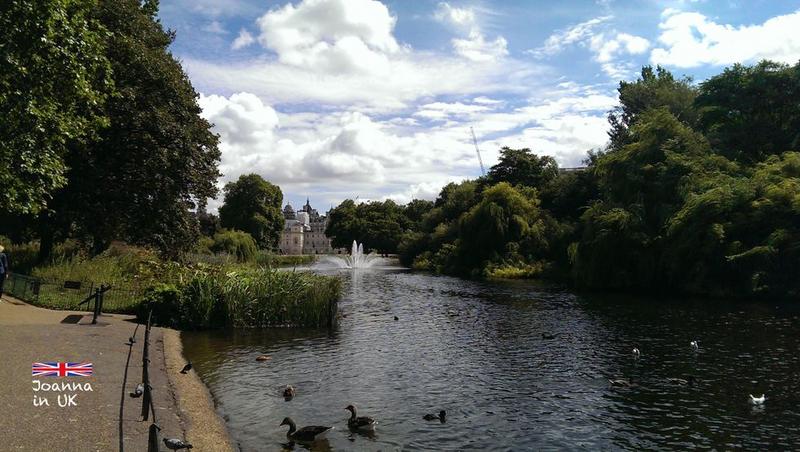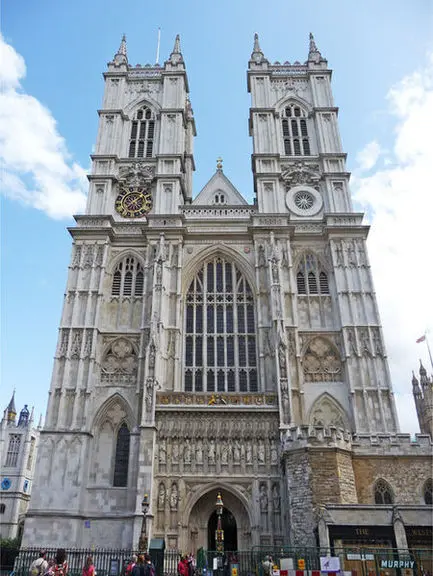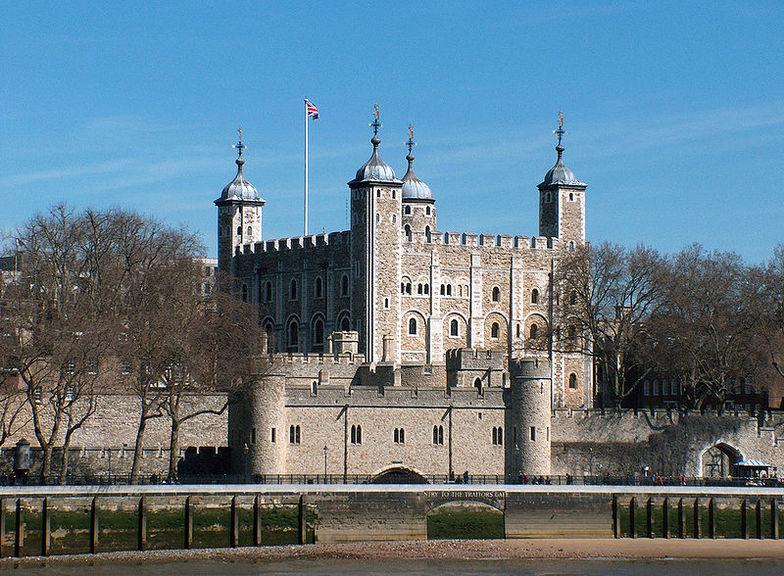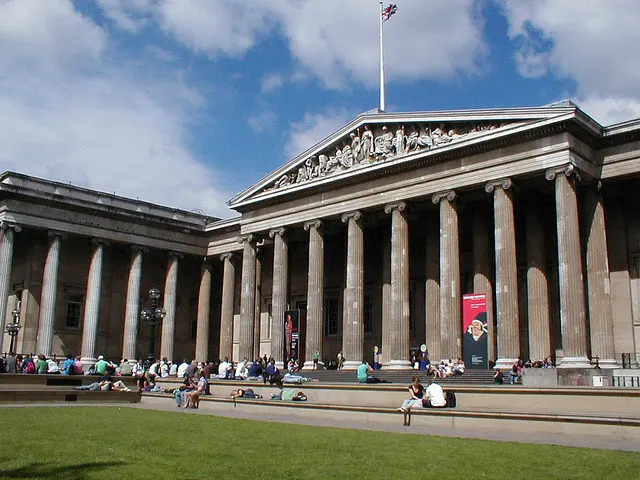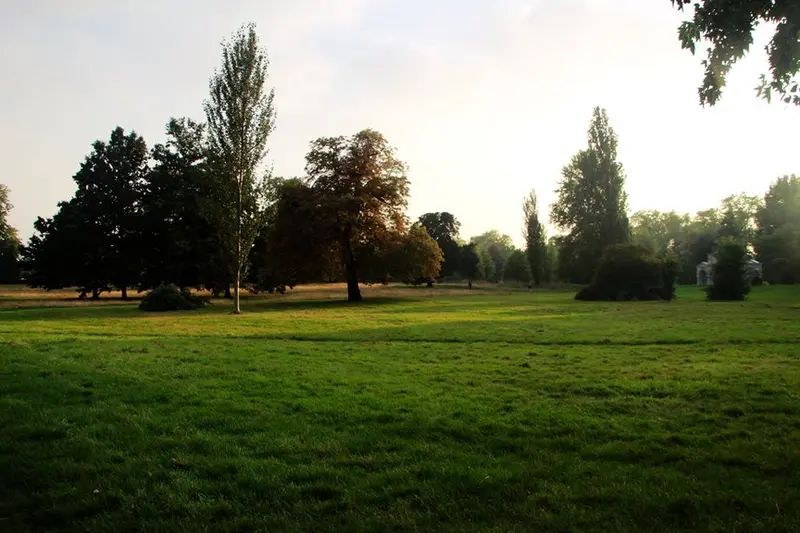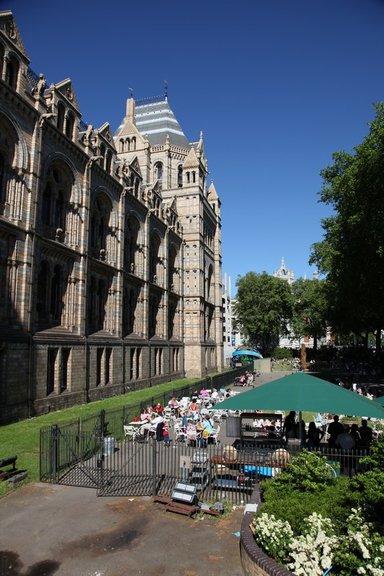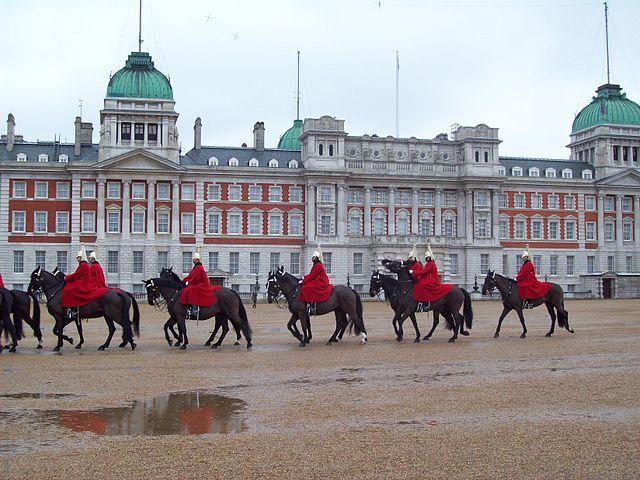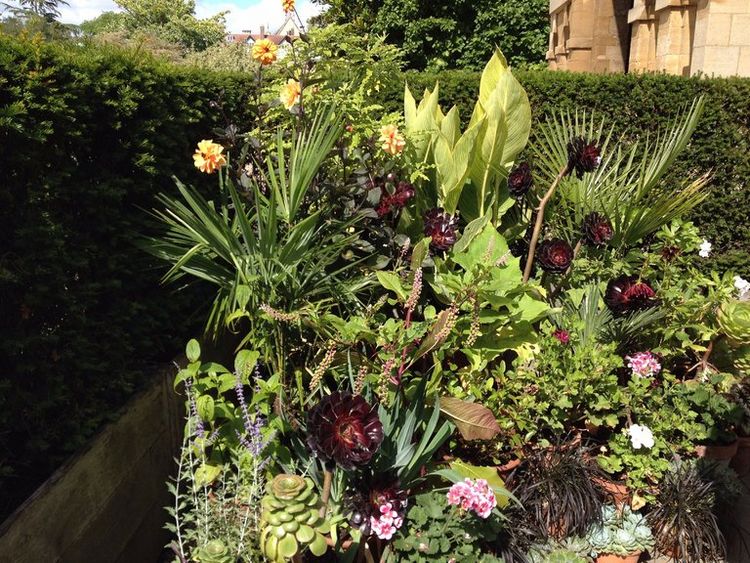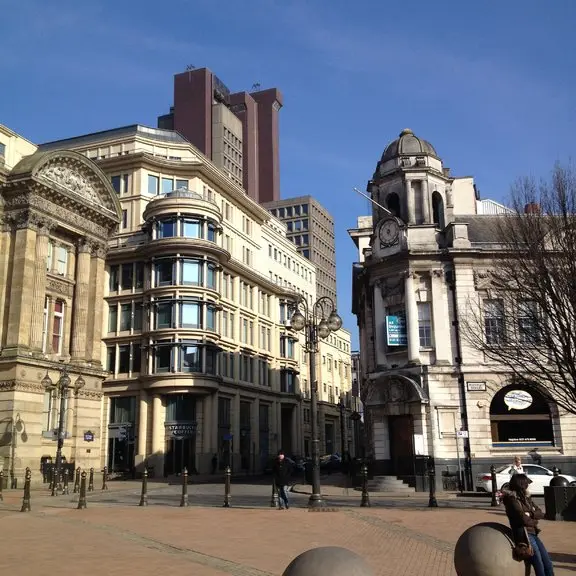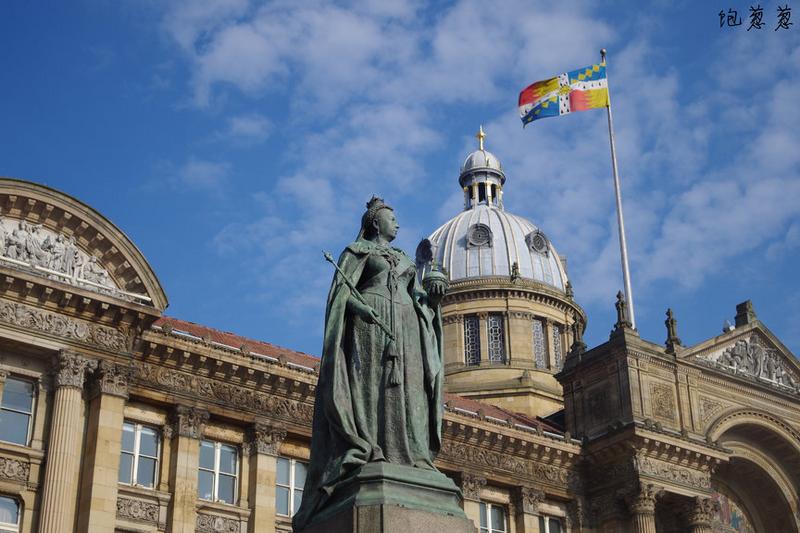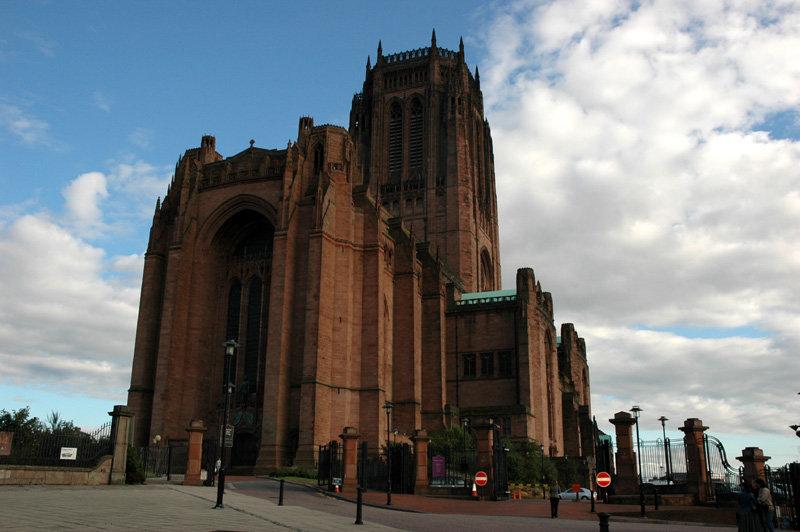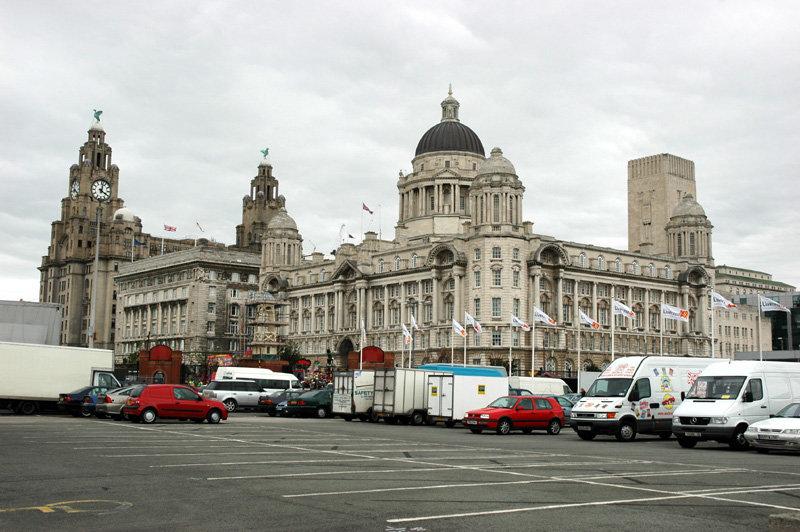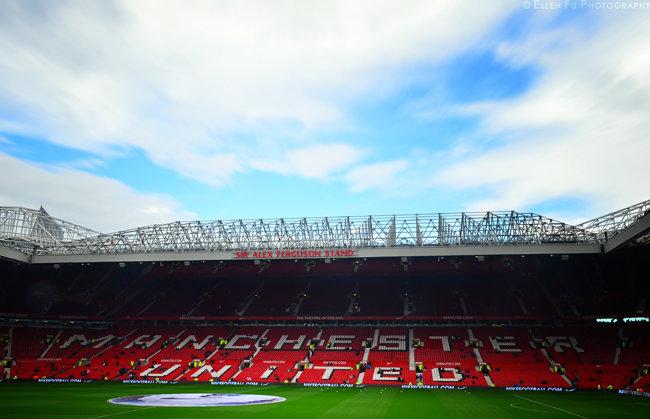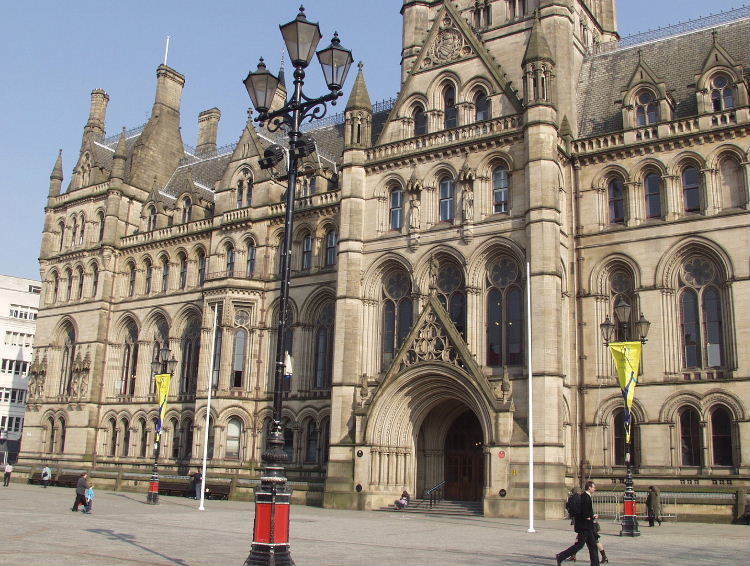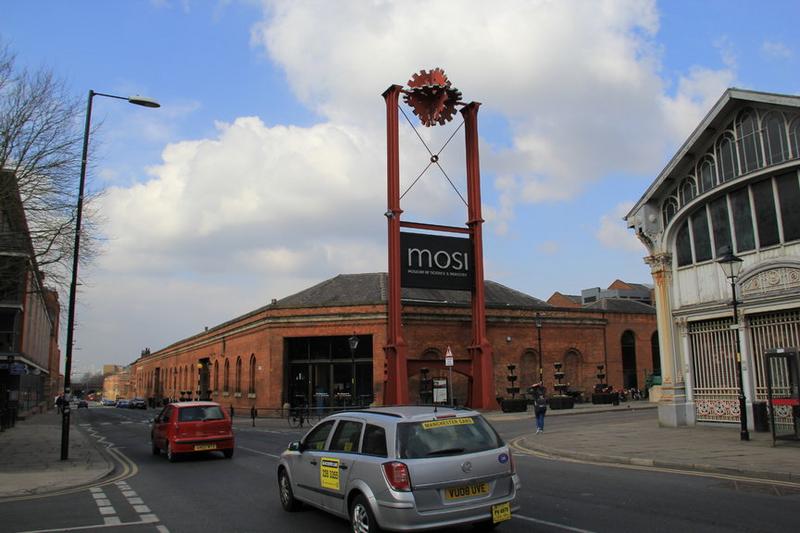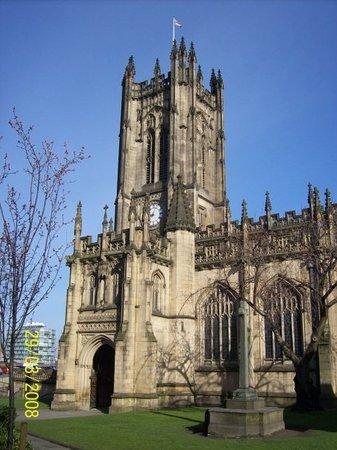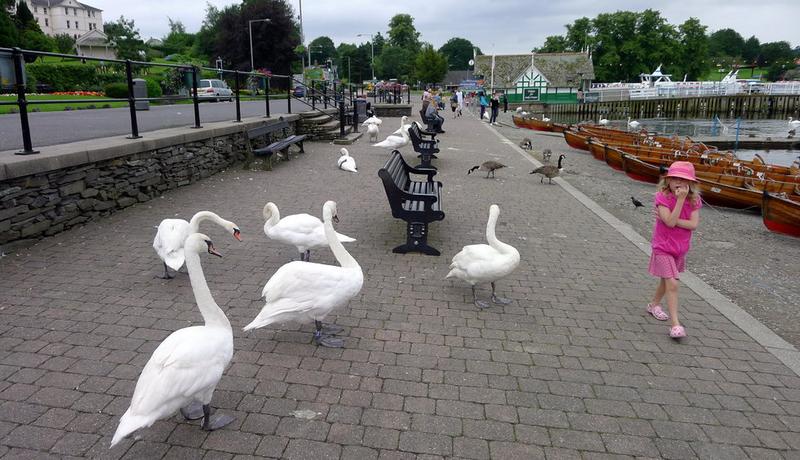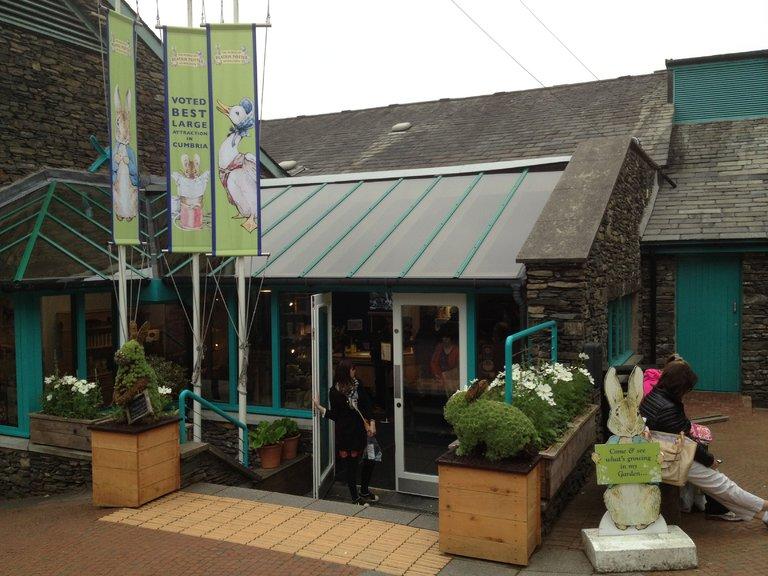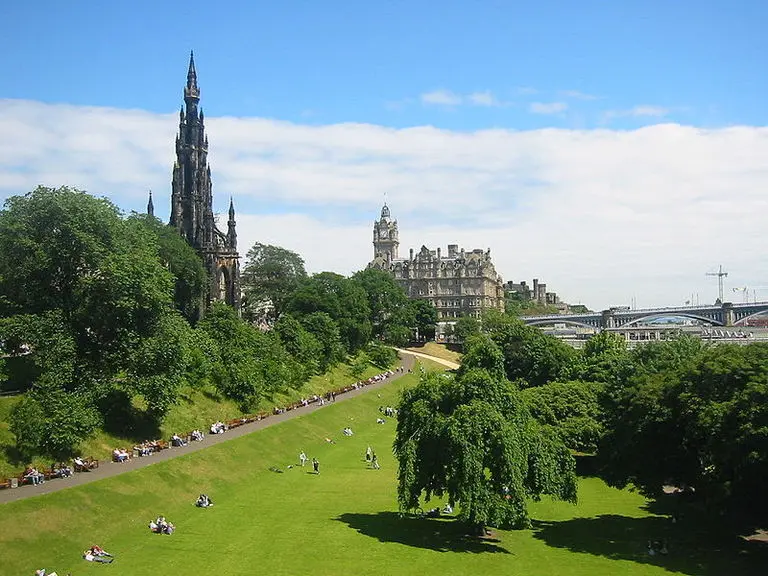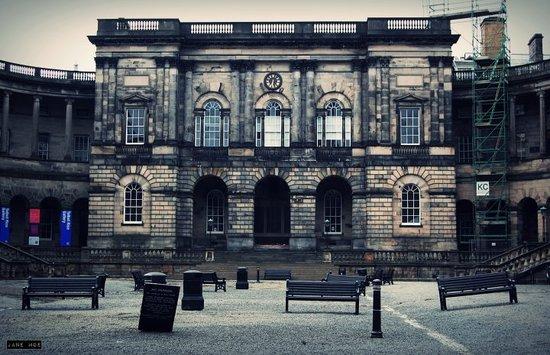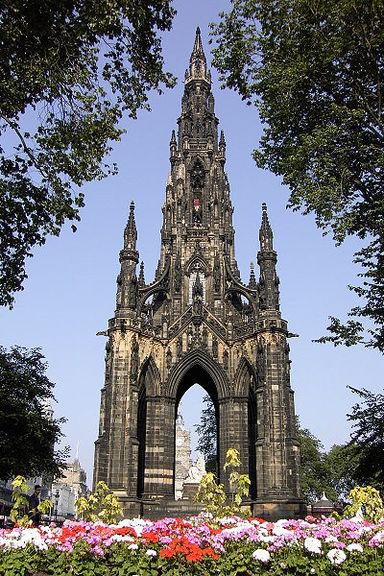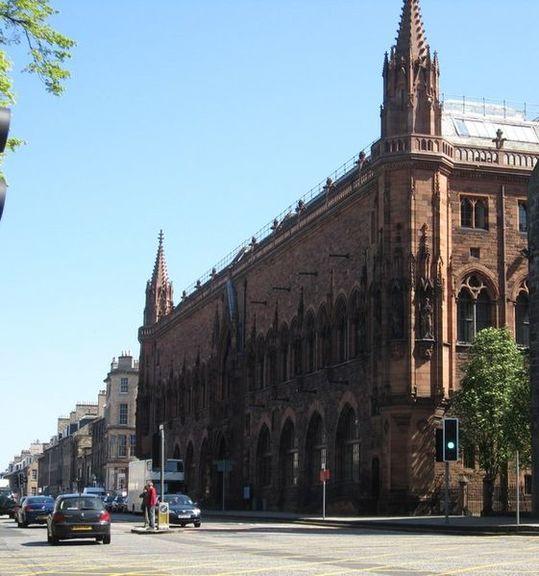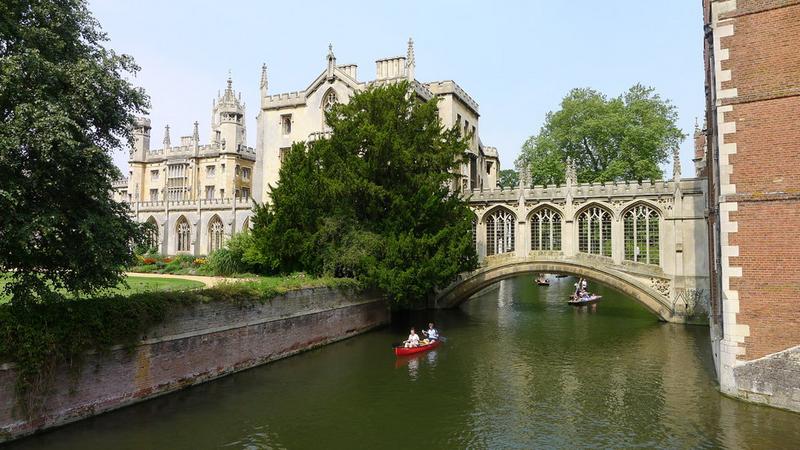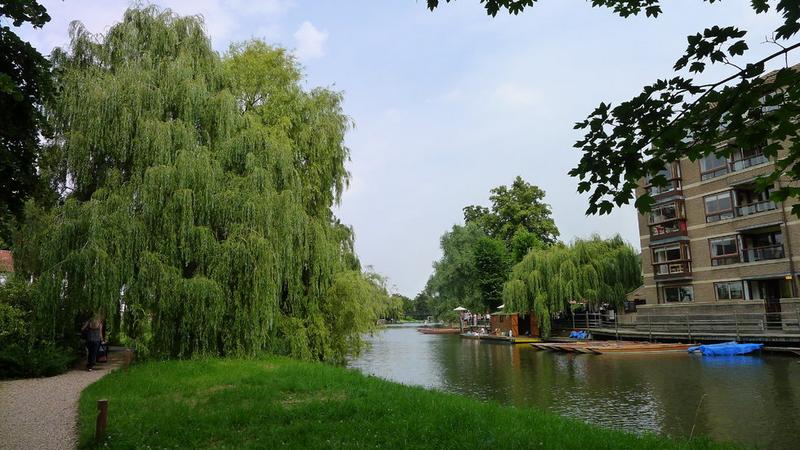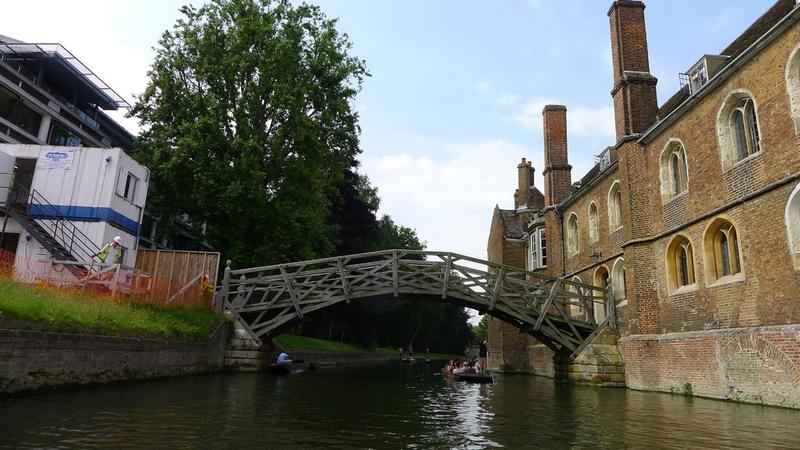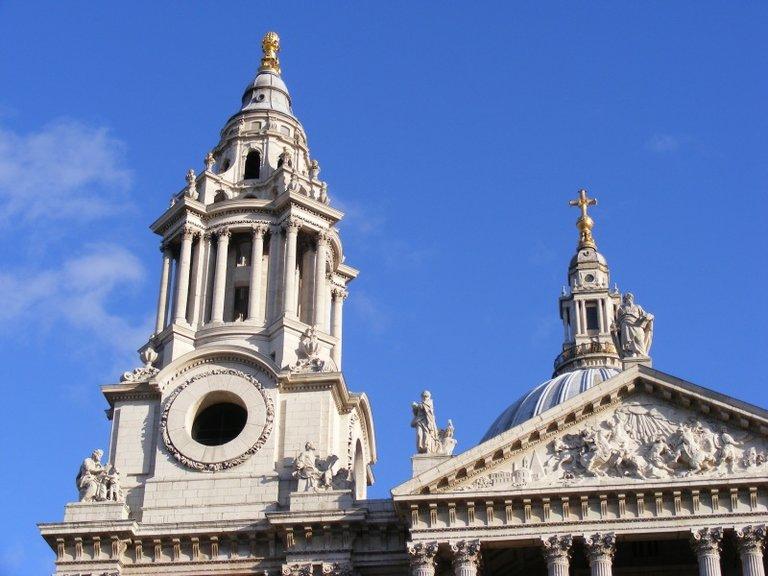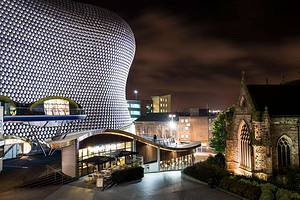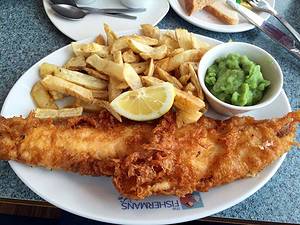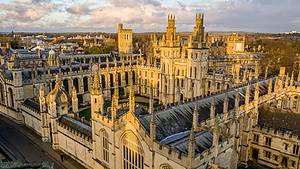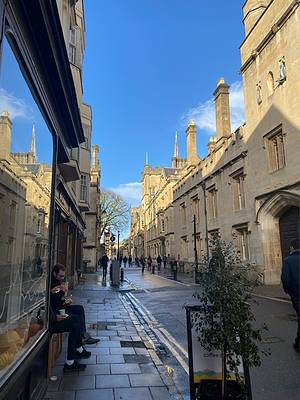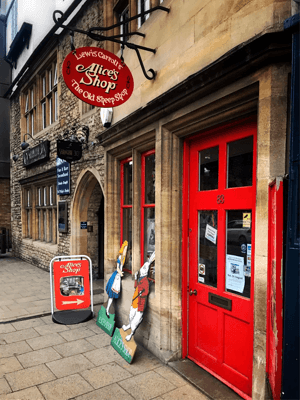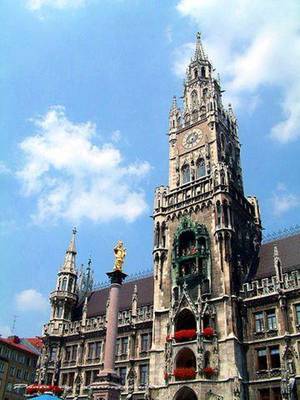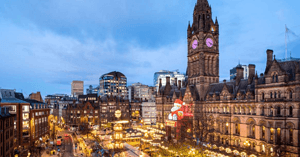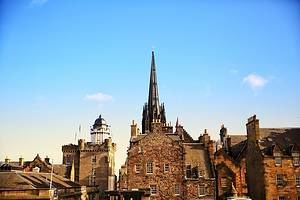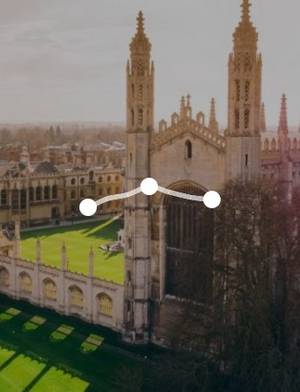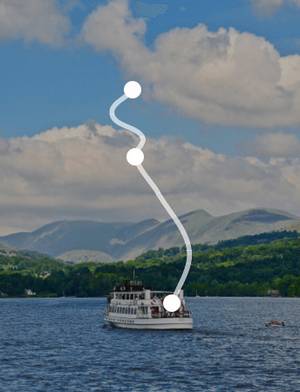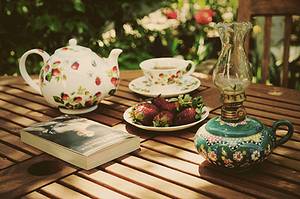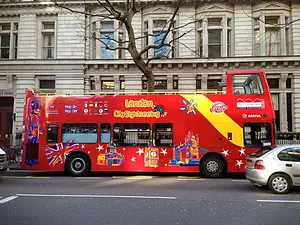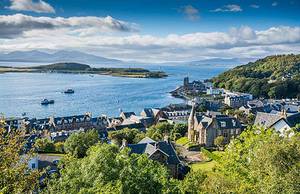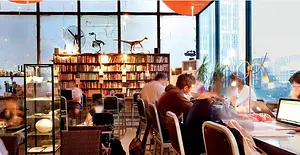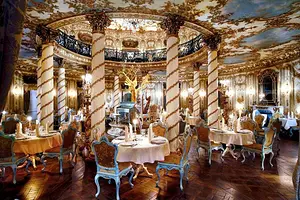11-day Deep Exploration of Royal British Culture
10 cities |
45 attraction(s) |
total distance 173
km
 TIPS
TIPS
Day1
Day2
Day3
Day4
Day5
Day6
Day7
Day8
Day9
Day10
Day11
Day1: London
7 attraction(s) ·
13 km
1
Buckingham Palace is the royal palace of the United Kingdom and serves as the Queen's office and residential place in London. It is also the headquarters of the royal administration and one of the few remaining royal palaces in use in the world. It is a popular location to witness the Changing of the Guard.
The palace is located within the City of Westminster, to the west of St. James' Park in London. It was originally built for the Duke of Buckingham in 1703, hence its name, which originally meant "someone else's home".
The State Rooms and Ballroom in the palace are grand and luxuriously decorated, housing many precious collections. However, they are only open to the public for visits to 19 State Rooms during the summer when the Queen is in Scotland. Each day in the summer and every other day in the winter, the palace hosts the spectacular Changing of the Guard ceremony at 11:00 am, allowing visitors to secure favorable positions for viewing.
When the Queen is present, the royal flag flies outside the palace.
2
km
2
St James's Park is located on the southern edge of the St James's district in the City of Westminster, London. It covers an area of 23 hectares and is the oldest park in the Royal Parks of London. The park is named after St James's Hospital and is adjacent to Green Park and Hyde Park. It features St James's Lake with two islands, West Island and Duck Island, as well as a bridge across the lake called the Blue Bridge. The park also contains the Tyburn Fountain, a children's playground, and a large sandbox. In the 16th century, King Henry VIII bought the marshland, which later became a residence fit for the king. During the reign of King James I in 1603, the marshland was drained, landscaped, and populated with exotic animals such as camels, crocodiles, elephants, and foreign birds. King Charles II was impressed by the meticulously designed gardens of the French royal palaces and hired French landscape designer André Mollet to create a 775-meter-long straight canal. In the early 18th century, cows still grazed in the park. In 1827, further renovations were done under the supervision of architect and landscape designer John Nash, transforming the straight canal into a more natural-looking lake and the formal avenues into winding paths. The nearest tube stations are St James's Park, Green Park, Victoria, and Westminster. St James's Park remains one of the most beautiful parks in central London and is home to the deer enclosure of St James's Palace.
1
km
3
Westminster Abbey, also known as Westminster Cathedral, is adjacent to the Houses of Parliament. It is not only the Church of England's place of worship, but also the venue for the coronation of kings and weddings of royal members. Prince William's wedding was held here in 2011. It can be said to be the highest church in the United Kingdom. Apart from members of the royal family, many famous people are buried here, including Newton, Darwin, Churchill, and others. Some say that people visit Westminster Abbey not to pay homage to the monarch, but to those who have made contributions to the country. The architecture of the entire church is representative of Gothic style, both splendid and solemn, with sunlight shining through colorful stained glass. Westminster Abbey was first built in the 10th century. Since William the Conqueror's coronation in 1066, the abbey has been the church for royal coronations. Over the past thousand years, many famous Britons have been buried here for future generations to admire and remember. For hundreds of centuries, millions of worshipers have come here to attend services.
1
km
4
Westminster Palace, also known as the Houses of Parliament, is the home of the UK Parliament (including the House of Commons and the House of Lords). Located on the west bank of the River Thames, it is situated close to other government buildings within the Whitehall area. Westminster Palace is a prime example of Gothic Revival architecture and was designated as a UNESCO World Heritage Site in 1987. The famous Big Ben is located in the clock tower at the northwest corner.
The building consists of around 1,100 individual rooms, 100 staircases, and 4.8 kilometers of corridors. Although the palace today is largely a result of 19th-century restorations, it still retains many historical features from its original construction, such as Westminster Hall (dating back to 1097), which is used for significant public ceremonial events, such as lying in state.
Big Ben, nicknamed for the clock tower of Westminster Palace, is one of the iconic landmarks in London. The tower stands at 95 meters tall, with a bell diameter of 9 feet and a weight of 13.5 tons. It chimes every 15 minutes, producing the distinctive Westminster chimes. The clock was completed on April 10, 1858, and is the largest clock in the UK. The tower itself is at least 320 feet (97.5 meters) in height, and the minute hand is 14 feet (4.27 meters) long. Big Ben is wound up manually, and during parliamentary sessions, the clock face is illuminated, chiming every hour.
6
km
5
The official name of the Tower of London is "Her Majesty's Palace and Fortress, The Tower of London". It has served as a fortress, an arsenal, a treasury, a mint, a palace, an execution site, a public records office, an observatory, a refuge, and a prison. Queen Elizabeth I was imprisoned here during the reign of her sister, Queen Mary I. The Tower of London was last used as a prison during World War II, with Rudolf Hess being held there. It was designated as a UNESCO World Heritage site in 1988. In 2012, a special exhibition of crown jewels was held here to commemorate the Queen's Diamond Jubilee.
1
km
6
One of the landmark buildings in London, named after its location near the Tower of London, is a bascule bridge spanning the River Thames, which opened in 1894. The lifting mechanism of Tower Bridge used to be steam-powered but has since been changed to electric, although the original mechanical structure is still preserved for visitors. If you're lucky, you can see the spectacle of Tower Bridge opening to allow tall ships to pass through.
5
km
7
Many people choose to overlook the panoramic view of London from the London Eye. This giant Ferris wheel, located on the banks of the River Thames, stands at a height of 135 meters. It officially opened to visitors in the year 2000, the millennium, and has 32 fully enclosed capsules, each capable of carrying around 20 people. It takes about half an hour to complete one rotation. The juxtaposition of this modern marvel and the surrounding historic architecture brings new vitality to ancient London. It is best to choose a clear and sunny day and book tickets online in advance, as this popular attraction in London always has long queues every day.
Day2: London
4 attraction(s) ·
12 km
1
The British Museum is one of the world's most famous museums with nearly eight million items in its collection. There are treasures from all over the world, from Egyptian mummies to Chinese antiquities, and it's all free to visit. If you have time, spend a whole day here, but if you only have 10 minutes, head straight to the mummy exhibition! Don't forget to explore the treasures in the Chinese section as well. The Great Court with its impressive glass roof is the main entrance, and the central circular reading room used to be part of the British Library until its relocation in 2000. It's recommended to arrive early to avoid the crowds, and you can also rent an audio guide to learn more about the history behind each exhibit.
6
km
2
Kensington Gardens, formerly the private garden of Kensington Palace, is a royal garden in London, United Kingdom. It is located west of Hyde Park, belonging to the City of Westminster and the Royal Borough of Kensington and Chelsea. The park covers an area of 111 hectares (275 acres). Four reigning monarchs from William III to George II lived here, and Queen Victoria was even born here. It has remained popular and was last inhabited by the renowned Princess Diana. Kensington Gardens is now open to the public, along with the adjacent Hyde Park.
2
km
3
The Natural History Museum is adjacent to the Science Museum and the Victoria and Albert Museum. It exhibits nearly 70 million exhibits related to the history of the Earth and biological evolution, including samples collected during Darwin's research on the theory of evolution and dinosaur fossils from the Jurassic period. Many of the collections have great historical and scientific value, such as specimens collected by Darwin. The Natural History Museum library has a large collection of books, journals, manuscripts, and art collections related to the research work of these scientific departments. To use the library, an appointment must be made in advance. The museum itself is also a masterpiece of European architectural art.
5
km
4
The parade ground next to Downing Street is the place where important official ceremonies, such as the Queen's birthday, are held every year. It is also the headquarters of the British military, and the imposing cavalry with high heads and red robes is a unique British scene. The beach volleyball of the Olympic Games is also held here.
Day3: London > Oxford
3 attraction(s) ·
76 km
1
One of the official residences of the Queen of England, and the largest inhabited castle in the world. The current Queen spends a lot of time living here and frequently engages in various official and private activities. Whenever the Queen is in the castle, the royal flag is raised. Windsor Castle is divided into three areas: Upper, Middle, and Lower Ward. The Upper Ward includes the State Apartments and the Dolls' House, while the Middle Ward features the Round Tower surrounded by the Rose Garden. The Lower Ward includes the Gothic-style St. George's Chapel. In addition to Windsor Castle, there are many other places worth visiting in the town of Windsor, such as the famous Eton College and Royal Ascot. The nearby town of Bray is also a culinary destination with two Michelin three-star restaurants, despite its small size.
74
km
2
Trinity College is a college of the University of Oxford, established in 1555. It is located on Broad Street in Oxford, between Balliol College and Blackwell's bookstore, across the street from Turl Street. It is surrounded by iron railings instead of walls, and its unique blue doors make it more open and accessible in appearance compared to other colleges in Oxford. The college has produced three British Prime Ministers and is ranked second along with Balliol College.
2
km
3
The University of Oxford Botanic Garden is the oldest botanic garden in England, established in the early 17th century. The garden has beautiful scenery.
Day4: Birmingham
3 attraction(s) ·
8 km
1
The magnificent Victoria Square is surrounded by 19th-century styled City Hall, Town Hall, and Municipal Post Office, which are beloved by the locals and pride of the entire city. The name of Victoria Square comes from the sculpture of Queen Victoria, which is the work of the renowned artist Sir Thomas Brock.
1
km
2
Located on the northeast side of Chamberlain Square, it is Birmingham's largest and most famous museum and art gallery. Its landmark is the clock tower, known as "Big Brum," which is often compared to the Big Ben in the Houses of Parliament in London. The museum and art gallery opened in 1885 under the patronage of the then Prince of Wales, later King Edward VII. It is renowned for its extensive collection of Victorian art, particularly pre-Raphaelite oil paintings, as well as ancient Greek and Roman art. The museum regularly hosts up to 40 different exhibitions on local history, natural history, archaeology, and world cultures.
8
km
3
The Cadbury Chocolate World is located in the suburbs. Here, you can not only learn about Cadbury's brand story and explore the chocolate production process, but also experience a variety of interactive activities. From cocoa planting to chocolate processing, the whole process is available. Throughout the visit, various chocolate gifts will be provided, making it a paradise for food lovers and children.
Day5: Liverpool
3 attraction(s) ·
3 km
1
Liverpool Cathedral, also known as Anglican Cathedral, is the largest cathedral in the UK and the fifth largest in the world. It was built in 1901. The exterior of the cathedral may not be particularly eye-catching, but the interior space is extremely high and ethereal. It is free to enter and listen to the choir's hymns. You can also climb to the top of the tower to enjoy the sunset view of Liverpool.
3
km
2
If the Beatles are considered the greatest and most successful band in the history of British pop music, there is probably no disagreement. The Beatles revolutionized and greatly influenced the development of popular music, making a significant contribution to the global rock scene.
Liverpool, the hometown of the Beatles, has a museum dedicated to honoring the band's greatness. The museum showcases the different periods of their career, from their early days in Hamburg to their time at CAVERNWALKS, and finally to the unprecedented popularity of the "Flower Generation" era.
Upon entering, several precious posters and images captivate fans, immersing them in the world of the Beatles. The museum houses their music, as well as valuable photographs, information, and a vast collection of original memorabilia.
1
km
3
Albert Dock is home to some of Liverpool's best bars, restaurants and museums. Notably, the Beatles Store is worth mentioning. For many, a visit to Liverpool is not complete without experiencing places related to the Beatles.
Day6: Manchester
4 attraction(s) ·
8 km
1
Old Trafford Stadium (Manchester United Museum and Tour) is the most famous and popular football club in the world. Fans of Manchester United consider Old Trafford Stadium (9:30am - 5pm) as a sacred place and idolize the football stars who play here. Highly recommend the team tour, which includes experiencing the feeling of sitting in the stands, visiting the changing rooms, the players' lounge, and walking along the underground tunnel to the pitchside resting area.
5
km
2
The municipal hall building stands on Albert Square, and inside the building, various sculptures and elaborate decorations can be seen everywhere. At the top of the building, there is a majestic tower that reaches into the sky, standing at a height of 85 meters. Visitors can explore it on their own, but since it is the main administrative center of Manchester, a more detailed visit and understanding of the building can be obtained by joining a guided tour at the visitor center.
2
km
3
The Science and Industry Museum is a museum located in Manchester, UK. The museum showcases the development of science, technology, and industry. In 2012, it became part of the National Science Museum.
2
km
4
St. John's Cathedral, also known as "Salford Cathedral," is a Roman Catholic church located in Salford, Greater Manchester. This large cathedral, built in the Neo-Gothic architectural style, was constructed between 1844 and 1848 and is a Grade II listed building in the United Kingdom.
Day7: Lake District National Park > Windermere And Bowness > Lake District National Park > Grasmere
4 attraction(s) ·
37 km
1
The largest lake in England, 13 miles long, located at the southern end of the Lake District. After the railway arrived here in the 19th century, it began to be open to a large number of tourists. It is the first stop for most tourists to the Lake District, so it is relatively commercialized. Windermere Lake is the largest lake in the entire Lake District, narrow and long, with a length of about 17 kilometers from south to north. It has a large number of "specialties" of the Lake District - goldeneye ducks, as well as a special fish called Windermere Char, whose history dates back to the Ice Age and was a traditional local delicacy.
5
km
2
If you are a fan of Beatrix Potter's story of Peter Rabbit, then you must come here. 23 stories about Peter Rabbit are vividly brought into the three-dimensional world. Here, you can see the scenes from the stories, hear the dialogues, and even experience the smells described in the stories.
17
km
3
Houshu Lake is one of the few man-made lakes in the region, and it is now a habitat preferred by red squirrels.
15
km
4
This was the former residence of the poet William Wordsworth, who was one of the greatest poets in Britain. It is here that he wrote his most famous poem, "Daffodils". Visitors can explore the scenes of his life with his family and enjoy various related exhibitions.
Day8: Edinburgh
4 attraction(s) ·
8 km
1
Holyrood Palace is now the official residence of the Queen and the Royal Family in Scotland. It was built in 1498 by James V and is closely linked to Scotland's rich history. The palace is most famous for being the residence of Queen Mary, and many dramatic scenes from her turbulent reign took place here. Queen Mary had two major weddings at Holyrood Palace and witnessed the assassination of her private secretary, David Rizzio, by her second husband Lord Darnley during a small dinner party. The palace is located at the eastern end of the Royal Mile, with Holyrood Park nearby, which is perfect for strolling.
3
km
2
Edinburgh Castle is a symbol of Edinburgh and even Scotland's spirit. Perched on top of an extinct volcano, it overlooks the city of Edinburgh. Every August, the Military Tattoo is held here, showcasing the grand and solemn atmosphere of Edinburgh Castle. Anyone visiting Edinburgh will not miss Edinburgh Castle, as it can be seen from various corners of the city center. The castle became a royal fortress in the 6th century and has since served as an important royal residence and national administrative center.
3
km
3
Prince Street Gardens is a picturesque garden in Edinburgh, Scotland, serving as the border between the Old Town and the New Town. It is also one of Scotland's most famous garden landscapes. The garden features the Scott Monument, a 200-foot tall tower dedicated to the renowned Scottish writer Sir Walter Scott. Visitors can climb its narrow staircase of 287 steps to reach the observation deck at the top, from which they can enjoy panoramic views of Edinburgh city center and its surroundings. On sunny days, both locals and tourists like to relax and sunbathe on the wide lawns or benches in the garden.
3
km
4
Calton Hill is located in the east of Edinburgh's New Town and is a high point and scenic area of the city. The hill is home to many historic monuments and buildings, such as a Greek-style temple built in the early 20th century as a response to the Great Depression to create employment opportunities. It attracts crowds of tourists during sunrise and sunset.
Day9: Edinburgh
4 attraction(s) ·
4 km
1
The University of Edinburgh is a public research university located in the capital city of Scotland, Edinburgh. It was founded in 1583 and is the fourth oldest university in Scotland and the sixth oldest in the English-speaking world. With forty-seven thousand applications received annually, it is the third most popular university in the UK. According to the 2013 QS World University Rankings, the University of Edinburgh is ranked first in Scotland, fifth in the UK, and seventeenth in the world.
2
km
2
The National Museum of Scotland was established in 2006 through the merger of the Scottish Museum and the Royal Museum of Scotland. The museum's collections range from dinosaur fossils to chess, from mummies to automobiles, exploring the diversity of Scotland and the world in terms of nature, culture, industry, science, and design. Each floor holds a different creative world waiting to be discovered. The museum has also received international awards for its unique and innovative display of exhibits. One of its famous collections is the specimen of Dolly the cloned sheep. Upon entering the museum, visitors can find free maps of the collections in various languages, including Chinese, at the Information Desk on the basement level. It is highly recommended to take the elevator to the seventh floor rooftop to enjoy the panoramic view of Edinburgh and Edinburgh Castle.
3
km
3
The Scott Monument is a Victorian Gothic memorial tower commemorating the Scottish writer Walter Scott.
The tower is 200 feet 6 inches tall and can be reached through a narrow staircase leading to a series of viewing platforms at the top, overlooking the Edinburgh city center and surrounding scenery. Climbing the highest viewing platform requires climbing 287 steps, and those who make it to the top can obtain a commemorative certificate. The tower is built with sandstone mined from Ecclesmachan nearby, with the stone containing asphalt, giving it a black color.
1
km
4
The Scottish National Portrait Gallery is located in a Neo-Gothic red sandstone palace. The gallery presents the best display of Scotland and its people, with portraits of famous figures from Scottish history and the present, such as Scottish Queen Mary, Prince Charles Edward Stuart, poet Robert Burns, and actor Sean Connery.
Day10: Cambridge
6 attraction(s) ·
5 km
1
Fitzwilliam College, Cambridge University, is a college of the University of Cambridge. It was founded in 1869 as a place for non-collegiate students to reside, and its buildings are located opposite the Fitzwilliam Museum. Fitzwilliam College became an official college of Cambridge University in 1966 and started admitting female undergraduate students in 1979.
2
km
2
Inside St. John's College, on the Cam River, built in 1831, it connects the old court and the new court of the college. It is said that when Queen Victoria visited this bridge, she exclaimed: "So beautiful! So unique!" It is like a gallery bridge, with three levels: upper, middle, and lower. The lower level is a semi-elliptical bridge arch spanning the Cam River; the middle is a passageway, namely a long corridor. Unlike other long corridors, its surface is not flat but arched, and pedestrians have to go up and down slopes to cross the bridge. The two sides of the bridge are semi-enclosed with five pairs of symmetrical glass windows, protected by steel-reinforced cement frames, for lighting; the upper level is flat, similar to the bridge deck of a typical cement bridge, and the top surface is balanced with symmetrical tower-like decorations. The appearance of the entire bridge is light yellow.
2
km
3
The River Cam is a small river that surrounds the main city area of Cambridge. "Cam" means "raised" in English. The river forms a large "S" shape around the central campus of the University of Cambridge. It was called "Jianhe" (meaning "Jian River") by Chinese students from Fujian and Guangdong who came to study in Cambridge, as "Cam" is pronounced "Jian" in their dialects. The name "Cam" gained popularity thanks to Xu Zhimo's poem "Saying Goodbye to Cambridge Again". River Cam and River Granta are actually the same river, but locals refer to it as Granta. River Granta specifically refers to the section from Cambridge town to Grantchester, which is the upstream part of the river with winding paths and pastoral scenery. The downstream part is wider and calmer, with magnificent buildings of the University of Cambridge along the banks, known as the College Backs. When renting a boat to float on the river from the Queen's College Wharf, the boat owner will ask you "Granta or Colleges?" This means whether you want to float on the River Cam or go to a specific college's back lawn. When visiting Cambridge, it is a must to go punting on the river, enjoying the picturesque scenery on both sides and listening to the boatman's fascinating legends.
1
km
4
Located on the south side of King's College, the college was founded by Queen Margaret, the wife of Henry VI in 1448, and later by Queen Woodville, the wife of Edward IV in 1465. It is therefore known as "Queens" to represent the two queens. The college combines medieval and modern architecture, and its style is also very unique. It spans both sides of the River Cam, connected by the famous Mathematical Bridge.
1
km
5
Crossing the River Cam on the campus of the University of Cambridge, the Mathematical Bridge connects the campuses of Queen's College on both sides of the river. Its unofficial name is the Mathematical Bridge, while its official name is simply "Wooden Bridge". Designed by William Etheridge and built by James Essex in 1749, the Mathematical Bridge was reconstructed in 1866 and 1905, but its original design remained unchanged.
1
km
6
The most famous attraction in Cambridge, established in 1441 by the then King of England, Henry VI, and named "King's College" after him. The college courtyard also features a bronze statue of Henry VI. The Gothic architecture is magnificent, with the King's College Chapel as its centerpiece. It was personally designed by the King and took nearly 100 years to complete. It is now a proud symbol of Cambridge and provides the most beautiful views from the lawn outside the chapel.
Day11: London
3 attraction(s) ·
5 km
1
St. Paul's Church, also known as the Actors' Church, is a Church of England church established in 1633. It is located in the Covent Garden area of London. It was designed by Inigo Jones and commissioned by the Earl of Bedford in 1631. The church is the parish church for Covent Garden and earned its nickname from its long association with the theater.
3
km
2
St. Paul's Cathedral in London is an Anglican cathedral, the residence of the Bishop of London, and the mother church of the Diocese of London. It is located on Ludgate Hill, the highest point in the City of London, and can be traced back to the original church built in 604 AD. The current cathedral, designed and built by the renowned British architect Christopher Wren over a period of 45 years in the late 17th century, is a representative of Baroque architecture. It is the second largest cathedral in England, behind only Liverpool Cathedral. Its dome, in particular, is spectacular, being the second largest in the world and the tallest on the planet. St. Paul's Cathedral is one of the most famous attractions in London, dominating the city's skyline for over 300 years. Until 1967, it was the tallest building in London, reaching a height of 111 meters. The cathedral has hosted ceremonies such as the funerals of Lord Nelson, the Duke of Wellington, Sir Winston Churchill, and Margaret Thatcher, as well as the coronation of Queen Victoria and the wedding of Prince Charles and Princess Diana. It is one of the two most worthwhile churches to visit in London. Climbing the 271 steps to the top of the cathedral allows visitors to overlook London, and they can also enjoy traditional English afternoon tea at the cathedral's café.
2
km
3
The Millennium Bridge crosses the River Thames in London, UK. It is 333 meters long and connects the Tate Modern and St. Paul's Cathedral. It can accommodate up to 5,000 people. The bridge was completed in 1999 and officially opened on May 13, 2000. Due to excessive swaying and vibrations caused by the large number of people, it was temporarily closed after being open for only three days. It was reopened two years later.
In Harry Potter and the Half-Blood Prince, Death Eaters invade the Muggle world and cause havoc, and the bridge destroyed in the film is the Millennium Bridge on the River Thames in London. This bridge is very light and does not have heavy piers. It is supported only by two Y-shaped structures on either side. It has a slender and smooth design, and in the movie, the bridge is directly flipped over.

